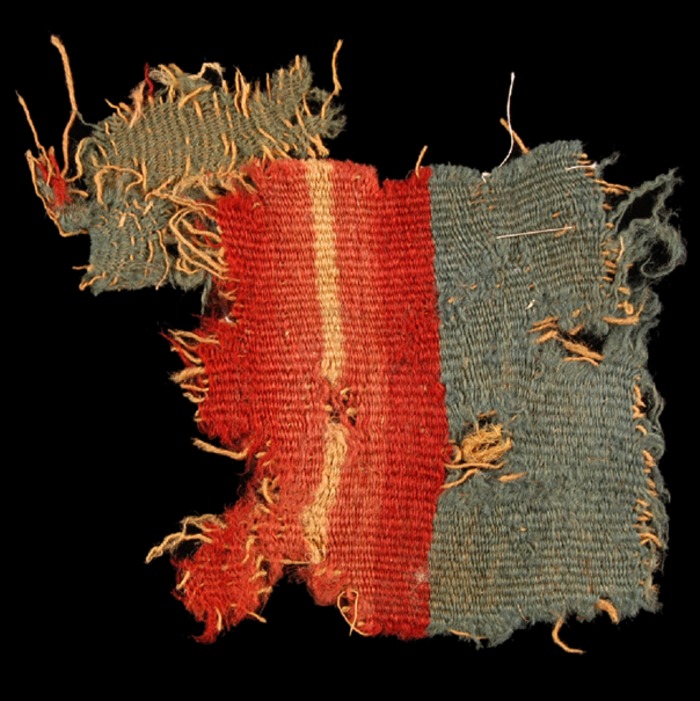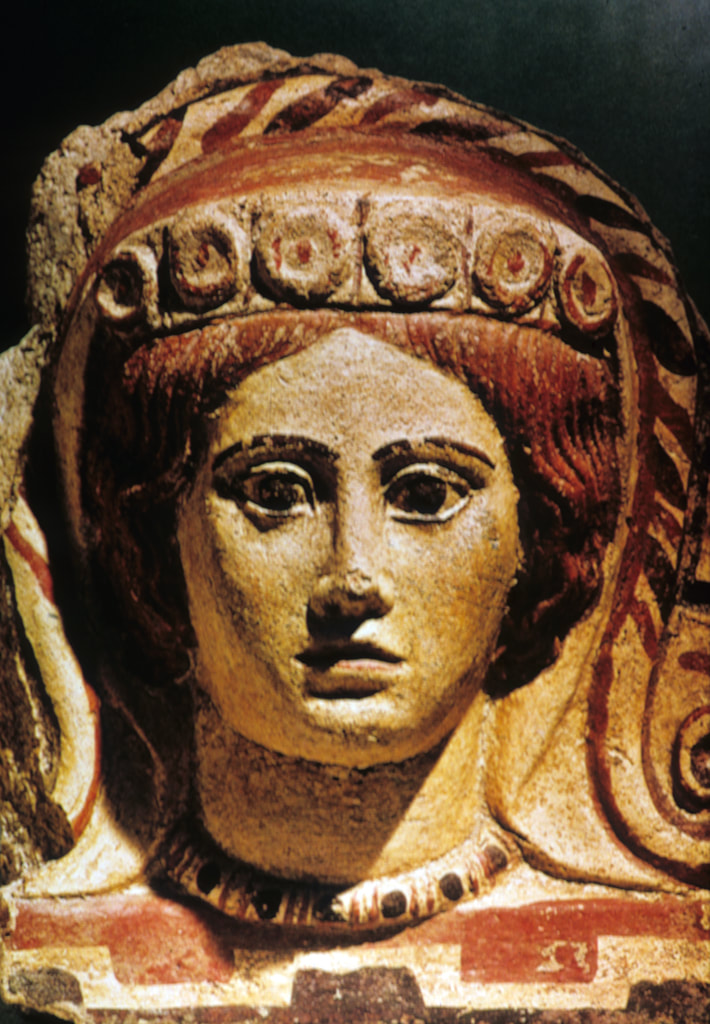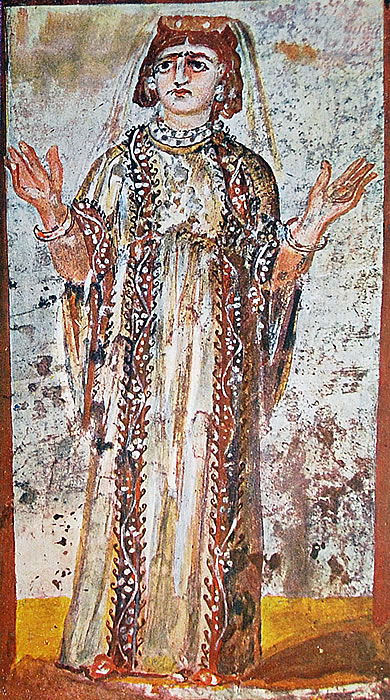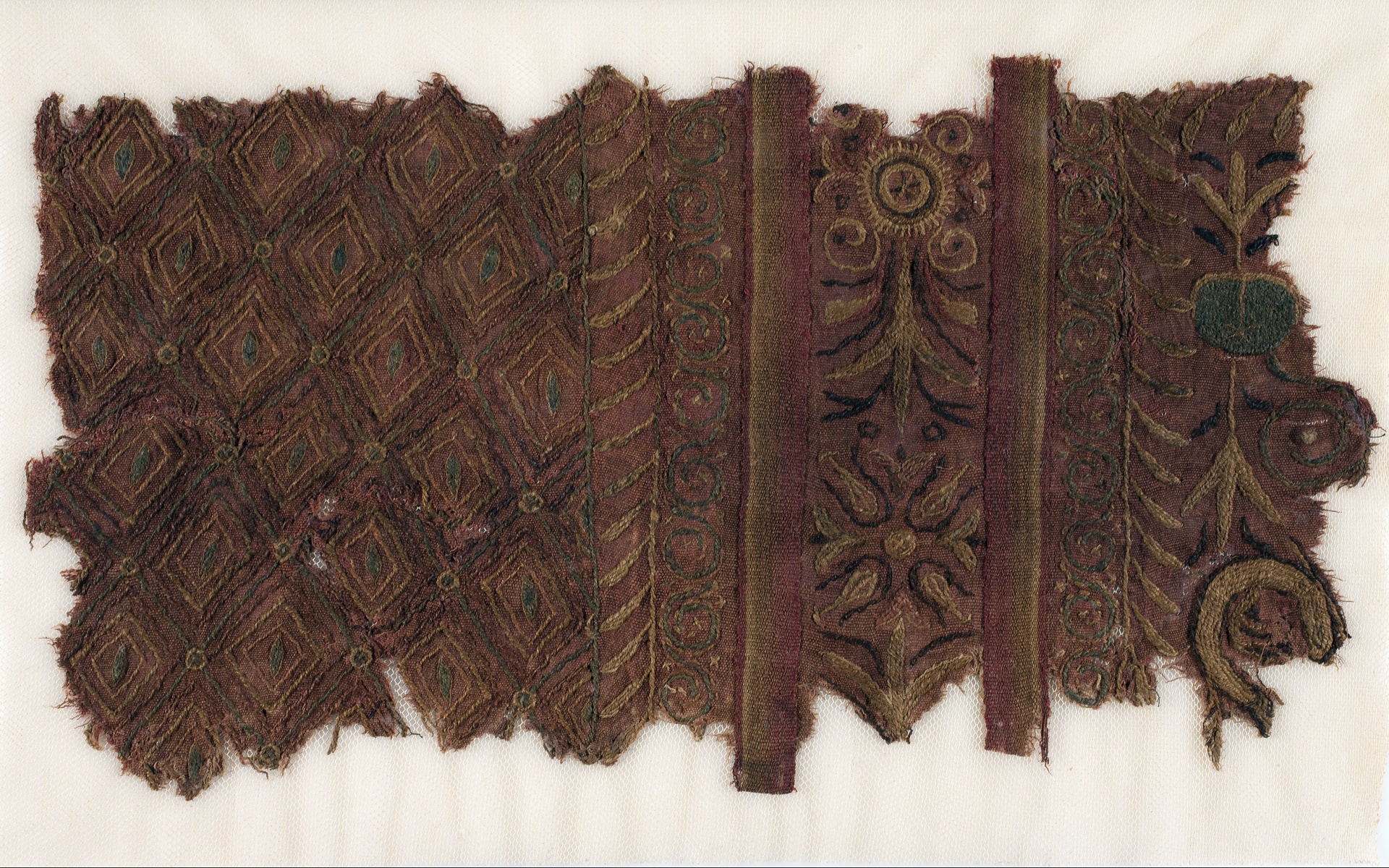The majority of the textiles found in Dura Europos are at present in New Haven, the Yale Art Gallery. Some were donated to the Cleveland Art Museum, to the Louvre and Musée du quai Branly in Paris.
Most of garments were made of wool and linen, and except of use of natural fiber colors (brown, beige), the textiles were dyed mostly in blue, red and purple with pigments: indygo, madder and kermes.
| Musée du quai Branly | |
|---|---|
 Wool Inventory number: 71.1934.72.59 |  Natural beige wool, dyed with madder and indygo Inventory number: 71.1934.72.65 |
 Wool, dyed with madder and indygo Inventory number: 71.1934.72.71 |  Wool, dyed with madder and indygo Inventory number: 71.1934.72.67 |
 Wool, dyed with kermes Inventory number: 71.1934.72.65 |  Wool, dyed with madder Inventory number: 71.1934.72.52 |
 Wool, Brown fabric with white borders Inventory number: 71.1934.72.31 |  Wool Inventory number: 71.1934.72.29 |
| Louvre | |
|---|---|
 © 2009 Musée du Louvre / Thierry Ollivier Wool on linen |  © 2009 Musée du Louvre / Thierry Ollivier Place of discovery Dura Europos Tower of the Archers = Tower of the Palmyrens |
 © 2017 Musée du Louvre / Antiquités orientales Wool fabric fragment: alternating red and green stripes. Several fragments with the same colors in different configuration of stripes. |   © 2017 Musée du Louvre / Antiquités orientales |
| Cleveland Art Museum | |
|---|---|
 Wool Inventory number: 1938.404 |  Wool Inventory number: 1938.405 |
 Wool, natural fiber colors Inventory number: 1938.408 |  Fragment of Tabby Cloth, goat’s hair Inventory number: 1938.406 |
SOURCES:
- Pfister, R., and Louisa Bellinger; The Textiles. Excavations at Dura-Europos Report 4, Part 2. Yale University Press, New Haven; 1945
- Textiles from Dura Europos in the Cleveland Art Museum
- Textiles from Dura Europos in the Louvre











